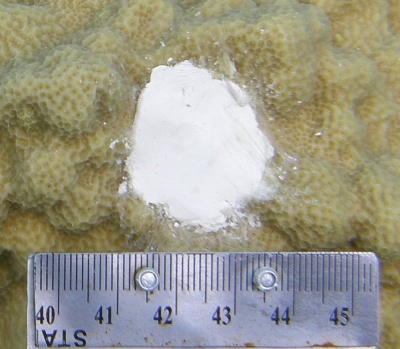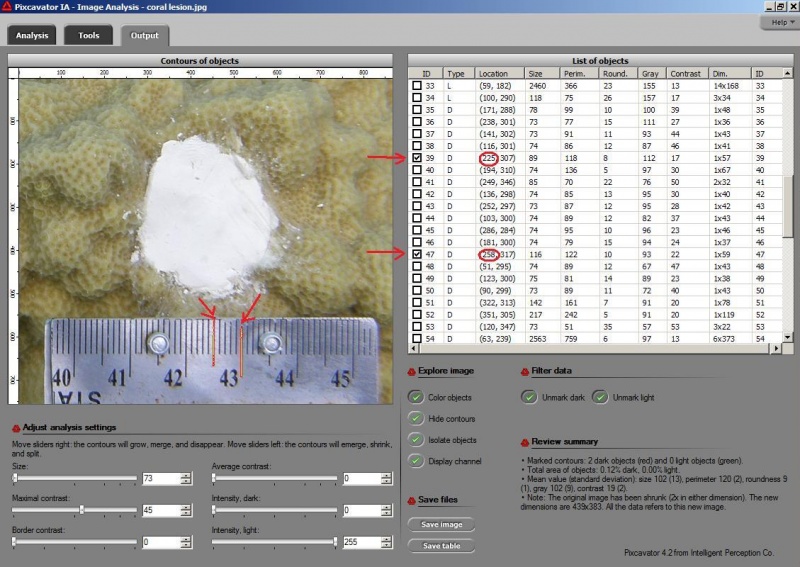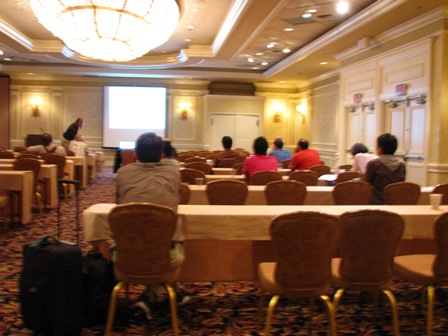Circumference of a coral lesion, an image analysis example

This came from an environmental researcher: “I need to determine the circumference of a coral lesion with a metric stick in the same picture.” The goal is to “determine how well corals are able to recover from damage or stress”.
This is what I was able to do with Pixcavator in about 10 minutes.
First, I cropped the image to speed up processing time. Then I ran the analysis. To capture the lesion I had to move the first slider almost all way to the right. The green contour then appears to capture the lesion well enough - the first screenshot. (The same result can be obtained using the other sliders.) Then in the table on the right you can see the size (area) of the spot: 19516 pixels. If you want to find the diameter, you can treat the spot as a circle with area 19516. Then the diameter is 2*sqrt(area/Pi) = 158.

Now, this result is in pixels. Pixcavator does not have at this time an automatic calibration feature but it can be done nonetheless. Out of many ways to do it - turn pixels into centimeters - I chose just one. In the second screenshot you can see that I captured two lines on the stick. Their second coordinates are 225 and 258. Then we have 5mm = 258 - 225 = 33 pixels. So the diameter is 158/33*5 = 79 mm which is reasonably close to what you see. If the setup is always the same, the calibration part will have to be done only once.

Digital discoveries
- Casinos Not On Gamstop
- Non Gamstop Casinos
- Casino Not On Gamstop
- Casino Not On Gamstop
- Non Gamstop Casinos UK
- Casino Sites Not On Gamstop
- Siti Non Aams
- Non Gamstop Casinos UK
- UK Casino Not On Gamstop
- Non Gamstop Casino UK
- UK Casinos Not On Gamstop
- UK Casino Not On Gamstop
- Non Gamstop Casino UK
- Non Gamstop Casinos
- Non Gamstop Casino Sites UK
- Best Non Gamstop Casinos
- Casino Sites Not On Gamstop
- Casino En Ligne Fiable




